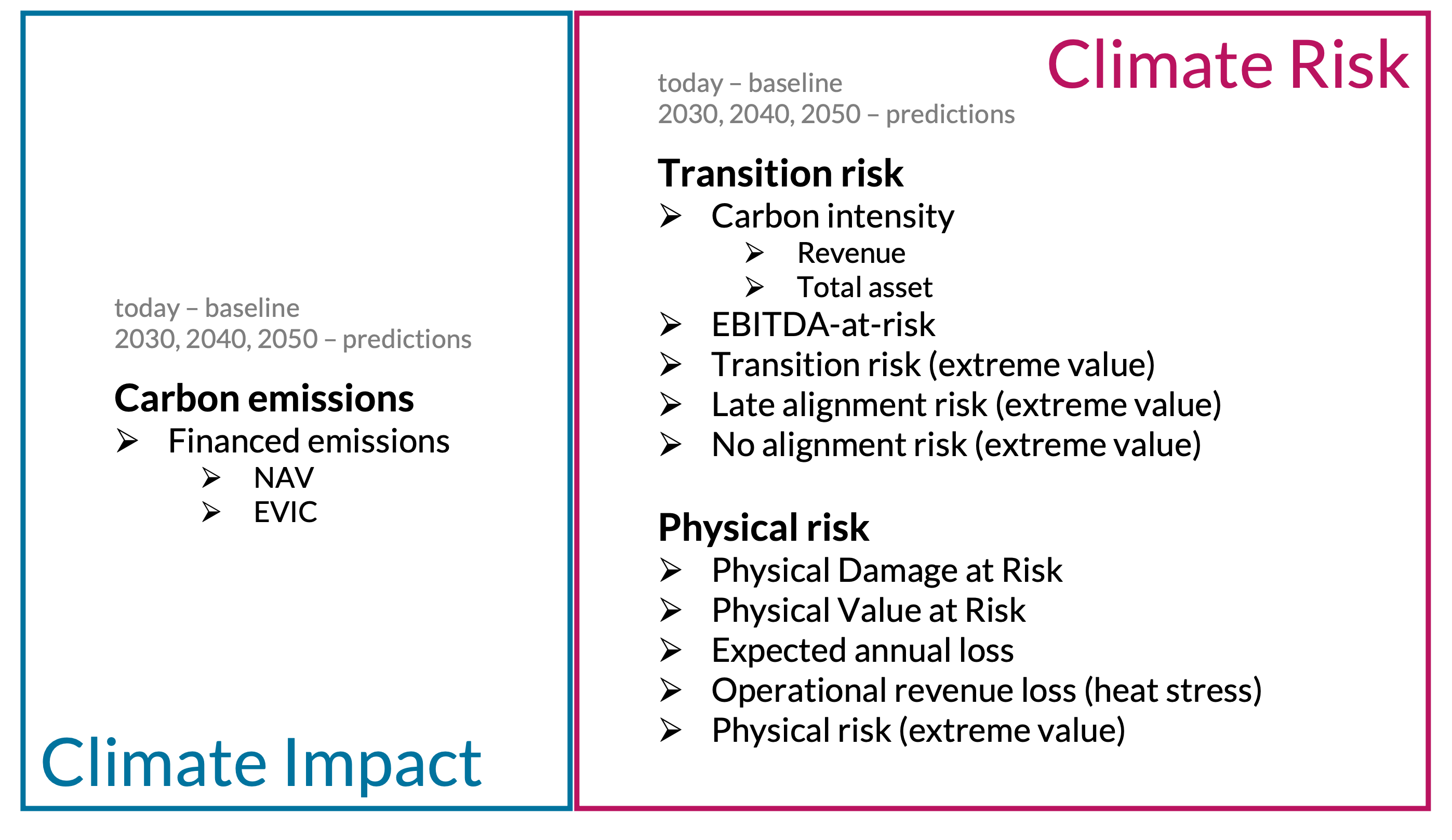2. Climate Risk Methodology
MARCH 2024
This section describes climate impact and risk methodology. The climate analytics section explains the metrics available on infraMetrics.
The full technical documentation can be downloaded.
The Content and Structure of this Documentation
This technical documentation on climate impacts and risks provides details on the applied methodologies, built models, and developed metrics. We introduce all our metrics covering carbon emission impacts and transition, physical, and financial risks stemming from climate change and future scenarios (see Figure). Our metrics are built on extensive data covering a representative sample of 760 assets across 68 TICCS asset subclasses in Europe, the Americas, and Asia-Pacific. The documentation supports and elaborates our climate data offering and will be updated accordingly.

Overview of climate impact and climate risk metrics developed in this documentation
Part 1 of this documentation defines climate impacts and risks, focusing specifically on carbon emissions and transition risks, physical risks, and climate scenarios.
Following the definitions, Part 2 is divided into three different foci and independent studies presenting our methodology and metrics on carbon emissions (Part 2A) and physical risks (Part 2B). Part 2C explains our climate scenario analyses used to build current and future metrics on transition and physical risks. Each part is structured in the same manner: We first explain our general modelling approach and then introduce the data used for our models. Chapter 3 builds the core of our research and explains the technical details behind the models we build to compute our metrics. Chapter 4 presents robustness analyses of the developed models and metrics.
Based on the methodology, the Climate Analytics section presents the climate impact and risk metrics and the products we offer. This part of the documentation introduces and defines each metric, following the structure of the infraMetrics platform: physical risk metrics on the asset level, averaged climate impact and transition risk metrics on the index level, and additional analytics to build sector-level benchmarks and customised proxies to compare climate and financial performances.
Overall, the documentation is of interest to our clients, researchers, the infrastructure industry, and the interested public who would like to
learn more about climate impact and risks,
understand the details of our methodology and models to estimate carbon emissions, calculate physical risk, and analyse climate scenarios, or
get an overview of the products we offer.
For relevant background information, please see the following pages:
